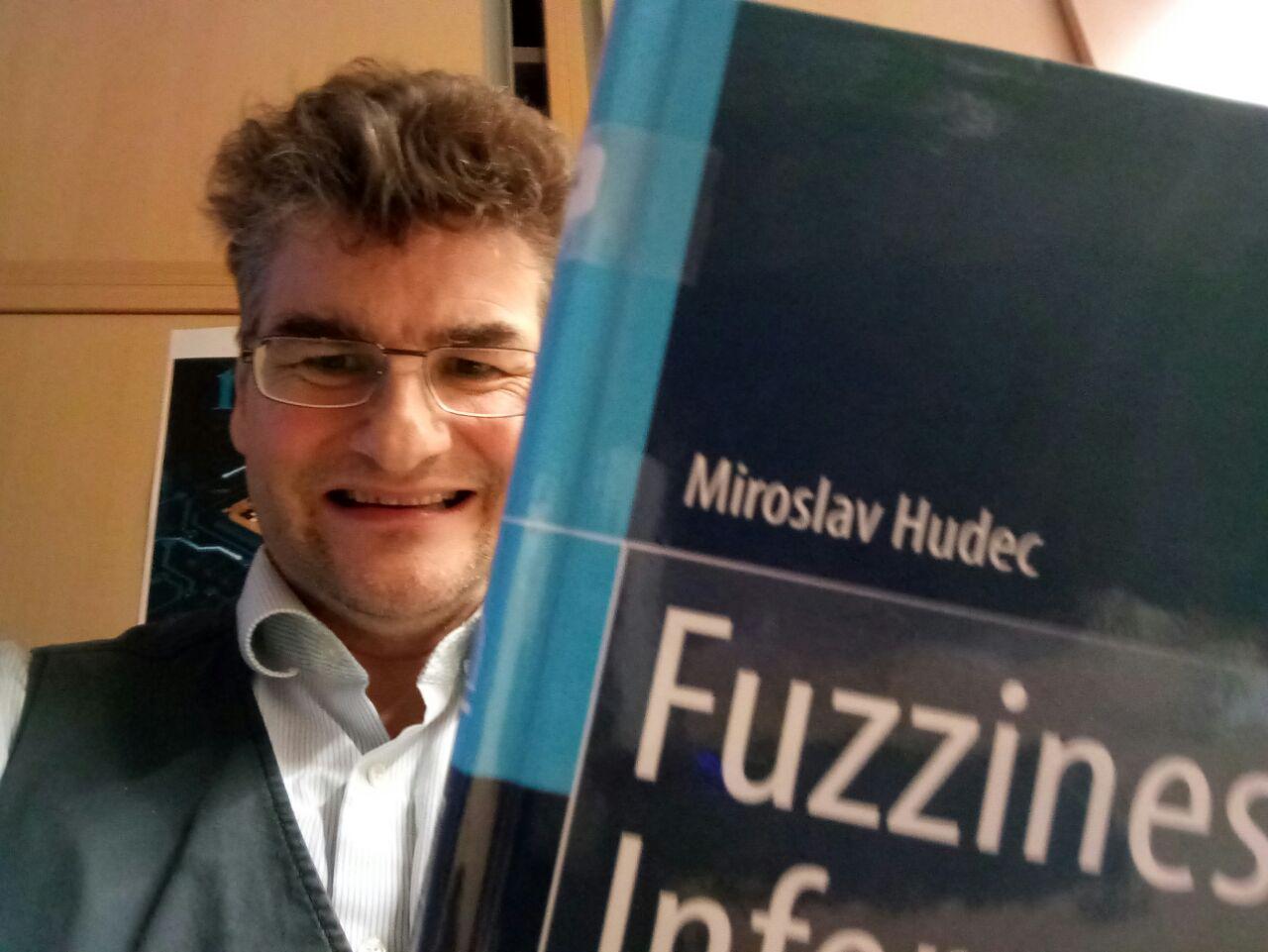Miroslav HUDEC from the University of Economics in Bratislava, Faculty of Economic Informatics will visitus in week 6 (joint invitation by HCI-KDD, the FeatureCloud project, and our friends from bbmri) and give a lecture on
The explanation of mined knowledge by fuzzy logic
When: Monday, 04th February, 2019, at 13:00
Where: Room 5th Floor, Institute of Medical Informatics, Statistics & Documentation
Address: Auenbruggerplatz 2/V, A-8036 Graz, Austria
Abstract:
The problem of explainability is pivotal in any knowledge discovery task, particularly in the medical domain [1]. Statistical AI/machine learning demonstrates great successes these days, but is often unable to explain the solution. The users of possible explanations are mainly domain experts e.g., medical doctors, who often face the lack of a certain level in general mathematical literacy and in particular the necessary statistical literacy. However, the solutions of machine learning algorithms are usually presented in a mathematical-statistical way. On the other hand, the computing with words concept [2] offers methods for explaining and disseminating mined knowledge from the data by expressions of natural language [3]. To reflect the elasticity of adverbs, adjectives and verbal quantifiers, fuzzy sets offer a “sliding scale” definition of linguistic terms by so-called membership functions. In addition, fuzzy logic offers a large scale of aggregation functions (e.g., variants of conjunction, disjunction and mixed functions) to support fitting the input data with their respective outputs. The powerful way for expressing relations among attributes is linguistic summary, usually a short quantified sentence of natural language – human understandable. The solution depends only on the intensities of belonging to fuzzy sets and therefore we can summarize from the diverse data types. To avoid summaries based on outliers or low data coverage, quality criteria adjusted to the particularities of considered tasks are indispensable. The solutions are usually delivered by poorly designed, yet often disappointingly presented user-interfaces. Developing both easy-to-use and robust interfaces is a challenging task, because they should reflect users’ needs efficiently. This talk revolves around the aforementioned challenges.
Short Bio:
Miroslav HUDEC is an associate professor at the University of Economics in Bratislava (Slovakia), Faculty of Economic Informatics. He received the Master and PhD degrees from the University of Belgrade (Serbia), where he recently got the position of visiting professor. His work is mainly focused on fuzzy logic, aggregation functions, knowledge discovery, and information systems. He is a member of program committees of several international conferences and serves as an editorial board member in several journals including Applied Soft Computing (SCI Impact Factor 3.907). Miroslav has published more than 50 scientific articles including a monograph with Springer [4]. In the FP7 project Blue-ETS he focused on the modernising official statistics, and he was leader of two work packages. His research interests are in a future combination of logical approaches with probabilistic-statistical machine learning.
[1] Andreas Holzinger, Bernd Malle, Peter Kieseberg, Peter M. Roth, Heimo Müller, Robert Reihs & Kurt Zatloukal 2017. Towards the Augmented Pathologist: Challenges of Explainable-AI in Digital Pathology. arXiv:1712.06657.
[2] Lotfi A. Zadeh 1996. Fuzzy logic = computing with words. IEEE transactions on fuzzy systems, 4, (2), 103-111. doi: 10.1109/91.493904
[3] Miroslav Hudec, Erika Bednárová & Andreas Holzinger 2018. Augmenting Statistical Data Dissemination by Short Quantified Sentences of Natural Language. 34, (4), 981, doi 10.2478/jos-2018-0048.
[4] Miroslav Hudec 2016. Fuzziness in Information Systems: How to Deal with Crisp and Fuzzy Data in Selection, Classification, and Summarization. New York: Springer International Publishing. doi 10.1007/978-3-319-42518-4
We gratefully acknowledge the support of the EU RIA 826078 FeatureCloud project, where we are leading the supervised fedearated machine learning and explanatory approach and bring in our expertise on digital pathology.
Miroslav HUDEC authored the 2016 Springer book “Fuzziness in Information Systems: How to Deal with Crisp and Fuzzy Data in Selection, Classification, and Summarization”. Usually users want to retrieve data or summarized information from a database and are interested in classifying it or building rule-based systems on it. But they are often not aware of the nature of this data and/or are unable to determine clear search criteria. The book examines theoretical and practical approaches to fuzziness in information systems based on statistical data related to territorial units. Chapter 1 discusses the theory of fuzzy sets and fuzzy logic to enable readers to understand the information presented in the book. Chapter 2 is devoted to flexible queries and includes issues like constructing fuzzy sets for query conditions, and aggregation operators for commutative and non-commutative conditions, while Chapter 3 focuses on linguistic summaries. Chapter 4 presents fuzzy logic control architecture adjusted specifically for the aims of business and governmental agencies, and shows fuzzy rules and procedures for solving inference tasks. Chapter 5 covers the fuzzification of classical relational databases with an emphasis on storing fuzzy data in classical relational databases in such a way that existing data and normal forms are not affected. This book also examines practical aspects of user-friendly interfaces for storing, updating, querying and summarizing. Lastly, Chapter 6 briefly discusses possible integration of fuzzy queries, summarization and inference related to crisp and fuzzy databases. The main target audience of the book is researchers and students working in the fields of data analysis, database design and business intelligence. As it does not go too deeply into the foundation and mathematical theory of fuzzy logic and relational algebra, it is also of interest to advanced professionals developing tailored applications based on fuzzy sets.





